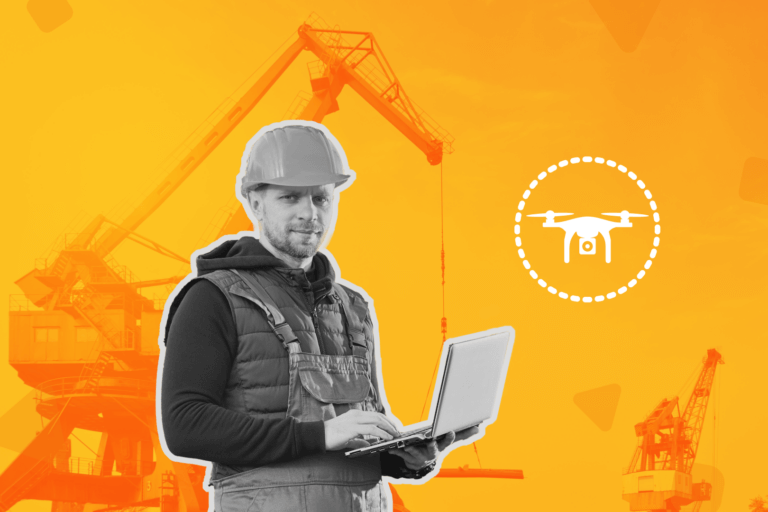It is important that the professionals in charge of accident prevention have an active and enriching dialogue with the work teams. This requires addressing cross-cutting issues, but also concrete and close to the daily life of each workplace. Here is where safety talks come in handy.
Human capital is the main asset of any organization, regardless of the economic activity that it develops. In fact, its participation is vital so that the production processes, or the services provided by a company, are carried out in a comprehensive, efficient manner and with high quality standards.
Only in this way will it be possible to consolidate a development strategy that increases and strengthens, in a sustained way, both the productivity and the competitiveness of the company.
In fact, it should not be forgotten that human resources play a transcendental role in the macroeconomic development of a country. In such a way, it is one of the pillars of national income and, consequently, of the Gross Domestic Product or GDP.
For this reason, the different international laws have established a large number of specific regulations, aimed at safeguarding the inalienable rights of workers. Among these stand out, in the first place, the care of health and safety in the exercise of their specific tasks.
However, just like when putting together a puzzle, such a strategy consists of different pieces that must be combined harmoniously and precisely to achieve a successful end goal. And one of the essential components of this “universe of interacting strategies” is what is known as “security talks”.
What do safety talks consist of?
As we have appointed on other articles, a safety talk is a short dialogue, lasting between 5 to 10 minutes, which is generally held before starting the working day. In general, it is always in charge of a professional or preventionist from the health and safety team, although on certain occasions it can also be carried out by the same crew leader or the respective shift manager of a company (previously trained for such purposes).
These talks address a topic related to the activities of each company or organization, with the aim of commenting on and / or analyzing situations relevant to the safety of workers.
For example, reviewing situations that occurred during previous days, or theoretical assumptions related to contingency actions, in order to correct mistakes made, prevent risk scenarios or outline possible response actions that can then be applied in the field.
It is important that these meetings are brief, so as not to lose the attention of their respective audiences, but, at the same time, they must be frequent enough to create “safety habits” in the workforce itself. This periodicity can be daily, weekly or monthly, depending on the characteristics of each productive sector or activity carried out.
The main benefits of conducting regular safety talks (daily, weekly or monthly) are the following:
- Increase worker awareness and participation in safety strategies.
- Reduce accident rates in all sectors of the economy.
- Improve the productivity of companies, from the reduction of events, errors and emergency situations.
Safety talks’ main keys
Despite these obvious advantages, if the safety talks are not planned properly, or the professionals in charge do not address them with sufficient responsibility, they can become a routine and unattractive element, which ultimately does not add any type of value within the company’s health and safety strategy.
For example, if the presenter in charge is limited to just delivering a PowerPoint presentation or reading a prepared script, he will not generate any dynamic interaction with his audience. On the contrary, it will only cause boredom or annoyance among those present, which will reduce attention and, consequently, will make the talk lose all its importance.
In the same way, it is essential that health and safety preventionists always take into account the reality of each company when preparing the talks. If only theoretically important topics are addressed, but these are too abstract or unrelated to daily tasks, the workforce will not feel interested, nor will they pay the necessary attention.
Main topics of safety talks
To avoid this type of negative situation, it is necessary to consider both the dynamics with which the security talk will be approached, as well as its contents. It may seem obvious, but every preventionist in charge should consider that their audience will not always have the same enthusiasm to follow his presentation. Thus, he must be prepared to adapt his speech to different audiences, educational backgrounds, and comprehension abilities.
This implies being prepared to offer attractive and relevant topics, as well as having the ability to improvise and change the discourse, according to the particular conditions of the work environment and of those attending the talk.
For example, if we work in a logging company, it will be very useful to analyze strategies to prevent excessive accumulation of sawdust in the environment, so that there is no risk of a combustible dust explosion.
On the contrary, in a mining company, it will be valuable to analyze the risks of collapse or vehicular accidents in the access roads; as well as the inherent danger in handling explosives or heavy industrial machinery such as drills, crushers, backhoes or loaders.
In a port facility, in turn, we should talk about the dangers of operating in environments with high traffic of heavy loads or eventual dangerous materials. As well as the risk of being in the middle of high flow of trucks, cranes and containers.
And in the case of activities with less physical impact, such as private offices, care services for people or public institutions, for example, we should consider aspects related to fire hazards, falls at ground level, interaction with electrical devices or manipulation of sharp objects, among other related topics.
At the same time, the preventionist can also incorporate risk elements related to the geographic location of the facilities into their talks. For example, risk of earthquakes, floods, volcanic eruptions, landslides, storm surges or snow avalanches, among other possibilities.
In all these cases, it is important that those in charge of the talks consider the reality of each company, so as not to lose the attention of their listeners. Although there are common themes for the different productive, industrial or service segments, these can have their differentiating nuances, taking into account the individual characteristics of each task and even each human team in particular.
Likewise, it is convenient that current aspects are not neglected, such as, for example, reinforcing hygiene and health measures that are now a regular part of the international pandemic scenario. In this regard, experts recommend reviewing in the talks all the steps of personal and general care and protection aimed at preventing the transmission of the virus, at least once a week, regardless of the type of work or productive segment.
The value of protective elements
In addition to addressing issues that consider the reality of the collaborators and their work environment, it is important that the preventionists in charge of the safety talks place permanent emphasis on the correct use of Personal Protection Elements (PPE), such as helmets, safety clothing, harnesses, masks, glasses and hearing protectors, among many other options.
Although, these do not completely eliminate the risk of suffering an accident; they do mitigate employee exposure to hazards in each workplace, and prevent workplace accidents from having a greater impact on them.
Only in this way, safety talks will be an integral part of a strategy that is effectively at the service of caring for the Human Capital of every company or organization, allowing them to be more competitive and successful, both in the short and long term.
Download the DataScope app and start now!
DataScope is the ideal tool to eliminate paper use, save time, and efficiently collect data from the field. It allows companies to streamline, organize and evaluate field work thanks to its online forms, which provide indicators in real time, 100% adaptable to any area.
With DataScope, your team can answer custom mobile forms from their phones or tablets, online or offline, through the app.






